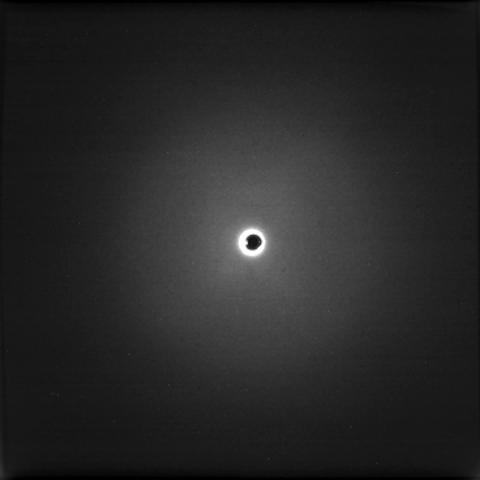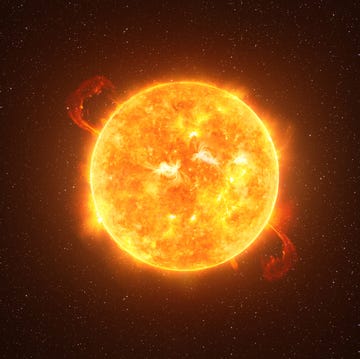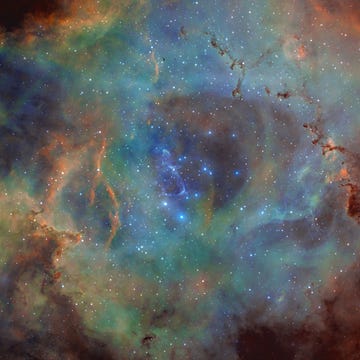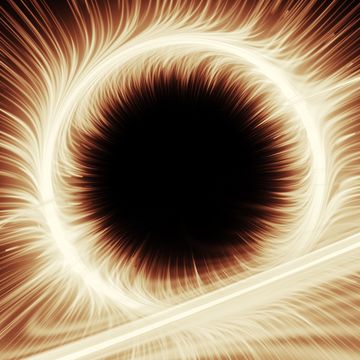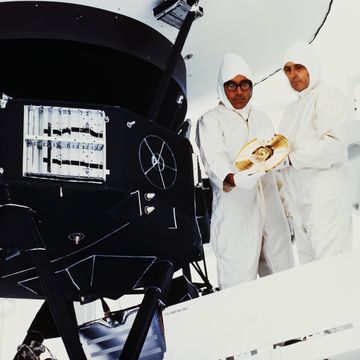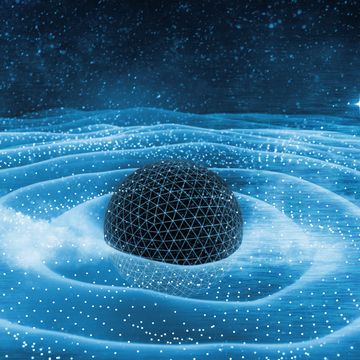Seven microscopic motes of dust may be the first material ever collected from outside our solar system, according to a team of researchers from Berkeley and the National Naval Research Laboratory. And from these tiny particles, researchers hope to learn about the origins of interstellar dust.
"The particles captured are a sample of the contemporary galaxy as it constantly evolves through star formation, death, and the redistribution of material as dust," planetary scientist Anna Butterworth tells Popular Mechanics.
The discovery is the fruit of eight years of combined effort by NASA researchers and 30,000 "citizen scientists,"—interested laypeople who spent hours searching digital images for traces of interstellar dust.
Interstellar Dust Storm
In 2002, NASA's comet-studying Stardust mission plucked these dust particles from a stream of interstellar dust, which Butterworth has compared to a snowstorm of dust blowing through the galaxy. Interstellar dust makes up about 1 percent of the visible matter in the Milky Way, and most of what we currently know about this material is based on how large masses of it absorb and reflect light at great distances. But the seven particles from Stardust may be scientists' first up-close look at what drifts in between the stars.
The particles are tiny; the largest are just 2 microns (0.002mm) wide—about a 2 percent of the diameter of a human hair. Some are even smaller. The larger particles from Stardust actually agglomerations of even smaller particles, which may once have had a crystalline structure a bit like a snowflake. However, millions of years of bumping into other particles and radiation exposure have left them weathered and amorphous.
"We think they were formed in the region of a star, because we found the minerals olivine and spinel, which are formed in hot environments," Butterworth says.
Rhonda Stroud of the Naval Research Laboratory and her team analyzed a small sample of the foil between the panels and found microscopic pits lined with partially melted residue.
Four of the pits turned out to hold the remains of dust particles too small to show up in the aerogel, which the spacecraft uses to collect samples; researchers now believe those may be samples of interstellar dust. However, other astronomers have pointed out that three of the particles contain sulfur compounds which aren't believed to be found in interstellar dust.
Oxygen isotope testing will confirm the origins of all seven particles. If the ratio of oxygen isotopes in the dust particles differs from the material usually found in our Solar system, Stroud says that will be a definitive answer.
Tracking Stardust
"The fabulous thing about aerogel is that it records the trajectories of the particles as they are captured," physicist Andrew Westphal says. When a piece of dust struck a collector panel, it left a microscopic trail in the aerogel, which scientists could follow to retrieve the embedded particle.
All they had to do was find the impact tracks, but that task would require an enormous amount of work. NASA scanned the panels to create digital images, which could be meticulously searched for the faint trails of interstellar dust. But by the time staff at Johnson Space Center had imaged the first half of the aerogel panels, they had roughly a million images.
NASA needed help. And at first, this seemed like the kind of huge data-crunching job that astronomers and physicists would turn over to computers. But the Stardust researchers quickly changed their minds. "Since we're at the frontier of interstellar research, we couldn't know exactly what we were looking for," Butterworth says.
Instead, the agency asked the public for help. NASA staff turned the images into a series of small movies that allowed viewers to move up and down through layers of aerogel as if focusing a digital microscope. Then they posted the images online and started what would become one of the earliest citizen science projects, called Stardust@home. Over the next few years, about 30,000 volunteers, who called themselves "Dusters," joined in the search for anything new and interesting.
"Our 'Dusters' are much more than searchers; they are active collaborators—co-authors—on an important research project," Butterworth tells Popular Mechanics. In fact, 714 of the Dusters are listed as co-authors of the new study published in today's issue of the journal Science.
When volunteers find a possible impact track in an image, they tag it, and Westphal's team takes a closer look. Thirty-one of those tracks were interesting enough that researchers at Berkeley used a scanning transmission x-ray microscope to study the chemical composition of the particles. All but two of the 31 turned out to be terrestrial in origin.
Of those 31, all but two turned out to have been not just solar, but terrestrial, in origin. "Most impacts in the collectors were from the spacecraft where some small solar system object hit and knocked off a small piece of debris," says Butterworth. Aluminum was a telltale, since the element does not naturally occur in space, and some of the particles also contained gas from Stardust's solar panels.
But for the remaining tracks, Stroud says, researchers used trajectory modeling to rule out other sources from within the Solar System. "The impact trajectory was from the direction of the interstellar dust stream," Butterworth says.
Researchers still have a hundred dust tracks identified by Stardust@home volunteers to analyze. And while 77 of the aerogel panels have been scanned to date, another 55 are still waiting. Images of the aluminum foil, 95 percent of which remains unsearched, will soon join the aerogel images. New citizen scientists can join the project when Stardust@home launches its newest phase on Aug. 15.

